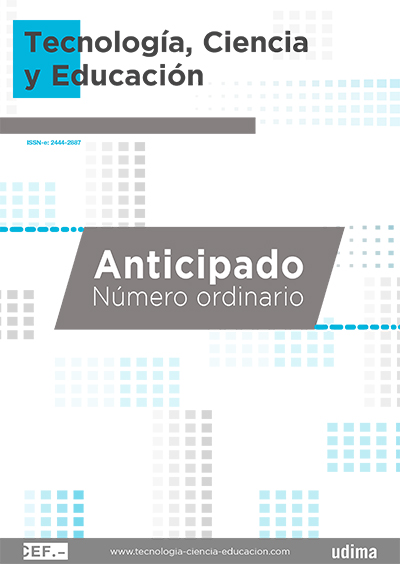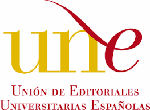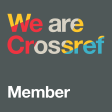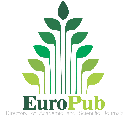Impacto de las tecnologías en el alumnado con trastorno del espectro autista: un análisis bibliométrico
DOI:
https://doi.org/10.51302/tce.2025.24391Palabras clave:
tecnologías, trastorno del espectro autista (TEA), impacto, habilidades sociales, educación, formación del profesorado, análisis bibliométricoResumen
Hoy en día, el uso de las herramientas digitales ha permitido realizar cambios significativos en el sistema educativo, permitiendo la igualdad de oportunidades y una mayor accesibilidad al alumnado en general. En este sentido, el alumnado con trastorno del espectro autista (TEA) necesita aplicar estos dispositivos electrónicos para mejorar en el proceso de enseñanza-aprendizaje. El presente estudio trata de aplicar un análisis bibliométrico sobre el impacto de las tecnologías de la información y la comunicación (TIC) en el alumnado con TEA con el objetivo de responder a tres preguntas de investigación planteadas. A través del análisis de dos bases de datos (Scopus y Web of Science) se recopilaron un total de 33 artículos sobre la temática. Los resultados reflejan una mejora significativa en el rendimiento escolar, habilidades sociales y motivación del alumnado. A modo de conclusión, se manifiesta una evidente necesidad de formar al profesorado en competencias digitales y de realizar más esfuerzos en esta línea de investigación, con el objetivo de proporcionar más conocimientos a la comunidad científica.
Descargas
Citas
Anblagan, T., Ahmad, N. y Roslan, S. (2023). Study on digital visual support intervention: a review of the influence of engagement and motivation on students with autism. International Journal of Academic Research in Progressive Education and Development, 12(2), 1.282-1.288. https://doi.org/10.6007/ijarped/v12-i2/17203
Ang, Y. L., Goh, H. G., Lee, C. K., Pheh, K. S. y Saw, S. H. (2024). Tailored virtual environments for facilitating school transition in children with autism. 12th International Conference on Information and Communication Technology (pp. 217-223). IEEE. https://doi.org/10.1109/ICoICT61617.2024.10698567
APA. (2013). Diagnostic and Statistical Manual of Mental Disorders (5.ª ed.).
Aria, M. y Cuccurullo, C. (2017). Bibliometrix: an R-tool for comprehensive science mapping analysis. Journal of Informetrics, 11(4), 959-975. https://doi.org/10.1016/j.joi.2017.08.007
Aromataris, E. y Munn, Z (2020). JBI Manual for Evidence Synthesis. Joanna Briggs Institute.
Barroso Osuna, J. y Cabero Almenara, J. (2013). La escuela en la sociedad de la información. La escuela 2.0. En J. Barroso Osuna y J. Cabero Almenara (Coords.), Nuevos escenarios digitales (pp. 21-36). Pirámide.
Bellini, S., Peters, J. K., Benner, L. y Hopf, A. (2014). A meta-analysis of school-based social skills interventions for children with autism spectrum disorders. Remedial and Special Education, 35(2), 96-114.
Bocheliuk, V., Shevtsov, A., Pozdniakova, O., Panov, M. y Zhadlenko, I. (2023). Effectiveness of psycho-correctional methods and technologies in work with children who have autism: systematic review. Journal of Intellectual Disability-Diagnosis and Treatment, 11(1), 10-20. https://doi.org/10.6000/2292-2598.2023.11.01.2
Booth, T. y Ainscow, M. (2002). Index for Inclusion: Developing Learning and Participation in Schools. Centre for Studies on Inclusive Education.
Bronfenbrenner, U. (1979). The Ecology of Human Development: Experiments by Nature and Design. Harvard University Press. https://doi.org/10.4159/9780674028845
Cabanillas-Tello, A. y Cabanillas-Carbonell, M. (2020).Application software analysis for children with autism spectrum disorder: a review of the scientific literature from 2005-2020. 2020 International Conference on e-Health and Bioengineering (pp. 1-4), Iasi, Rumanía. https://doi.org/10.1109/EHB50910.2020.9280261
Cardy, R., Smith, C., Suganthan, H., Jiang, Z., Wang, B., Malihi, M., Anagnostou, E. y Kushki, A. (2023). Patterns and impact of technology use in autistic children. Research in Autism Spectrum Disorders, 108. https://doi.org/10.1016/j.rasd.2023.102253
CAST. (2011). Universal Design for Learning Guidelines (Version 2.0). http://www.cast.org
Celis Alcalá, G. y Ochoa Madrigal, M. G. (2022). Trastorno del espectro autista (TEA). Revista de la Facultad de Medicina, 65(1), 7-20. https://doi.org/10.22201/fm.24484865e.2022.65.1.02
Chauhan, S. (2017). A meta-analysis of the impact of technology on learning effectiveness of elementary students. Computers & Education, 105, 14-30. https://doi.org/10.1016/j.compedu.2016.11.005
Cobo, M. J., Martínez, M. A., Gutiérrez-Salcedo, M., Fujita, H. y Herrera-Viedma, E. (2015). 25 years at knowledge-based systems: a bibliometric analysis. Knowledge-Based Systems, 80(3), 3-13. https://doi.org/10.1016/j.knosys.2014.12.035
Coll, C. (2004). Psicología de la educación y prácticas educativas mediadas por las tecnologías de la información y la comunicación: una mirada constructivista. Sinéctica, 25, 1-24. https://www.redalyc.org/pdf/998/99802505.pdf
Durán Cuartero, S. (2021). Tecnologías para la enseñanza y el aprendizaje del alumnado con trastorno del espectro autista: una revisión sistemática. Innoeduca International Journal of Technology and Educational Innovation, 7(1), 107-121. https://doi.org/10.24310/innoeduca.2021.v7i1.9771
Fernández-Batanero, J. M., Cabero-Almenara, J., Román-Graván, P. y Palacios-Rodríguez, A. (2022). Knowledge of university teachers on the use of digital resources to assist people with disabilities. The case of Spain. Education and Information Technologies, 27(7), 9.015-9.029. https://doi.org/10.1007/s10639-022-10965-1
Fernández-Batanero, J. M.ª, Román Graván, P., Montenegro-Rueda, M. y Fernández-Cerero, J. (2021). El impacto de las TIC en el alumnado con discapacidad en la educación superior. Una revisión sistemática (2010-2020). EDMETIC. Revista de Educación Mediática y TIC, 10(2), 81-105. https://doi.org/10.21071/edmetic.v10i2.13362
Fernández-Cerero, J., Fernández-Batanero, J. M.ª y Montenegro-Rueda, M. (2024). Possibilities of extended reality in education. Interactive Learning Environments, 33(1), 208-222. https://doi.org/10.1080/10494820.2024.2342996
Fernández-Cerero, J., Montenegro-Rueda, M. y Fernández-Batanero, J. M.ª. (2023). Impact of university teachers´ technological training on educational inclusion and quality of life of students with disabilities: a systematic review. International Journal of Environmental Research and Public Health, 20(3), 1-15. https://doi.org/10.3390/ijerph20032576
Gallardo-Montes, C. P. y Capperucci, D. (2021). Formación y utilización de TIC por parte de docentes en aulas con alumnado con autismo. Revista RETOS XXI, 5(1), 1-21. https://doi.org/10.30827/retosxxi.v5i1.25292
Gallardo Montes, C. P., Caucel Cara, M.ª J. y Capperucci, D. (2020). Plataformas webs y recursos online centrados en habilidades comunicativo-lingüísticas para familias de personas con autismo. Revista RETOS XXI, 4(1), 1-19. https://doi.org/10.33412/retosxxi.v4.1.2787
García Guillén, S., Garrote Rojas, D. y Jiménez Fernández, S. (2016). Uso de las TIC en el trastorno de espectro autista: aplicaciones. EDMETIC. Revista de Educación Mediática y TIC, 5(2), 134-157. https://doi.org/10.21071/edmetic.v5i2.5780
García-Valcárcel Muñoz-Repiso, A. y Tejedor Tejedor, F. J. (2017). Percepción de los estudiantes sobre el valor de las TIC en sus estrategias de aprendizaje y su relación con el rendimiento. Educación XX1, 20(2), 137-159.
Grynszpan, O., Weiss, P. L., Perez-Diaz, F. y Gal, E. (2014). Innovative technology-based interventions for autism spectrum disorders: a meta-analysis. Autism, 18(4), 346-361. https://doi.org/10.1177/1362361313476767
INTEF. (2017). Marco común de competencia digital docente. https://aprende.intef.es/marco
Kagohara, D. M., Meer, L. van der, Ramdoss, S., O'Reilly, M. F., Lancioni, G. E., Davis, T. N., Rispoli, M., Lang, R., Marschik, P. B., Sutherland, D., Green, V. A. y Sigafoos, J. (2013). Using iPods® and iPads® in teaching programs for individuals with developmental disabilities: A systematic review. Research in Developmental Disabilities, 34(1), 147-156. https://doi.org/10.1016/j.ridd.2012.07.027
Karagianni, E. y Driga, A. M.ª. (2024). Inclusive learning and development practices for children with autism spectrum disorders and the ICT´s role. Global Journal of Engineering and Technology Advances. https://doi.org/10.30574/gjeta.2024.18.1.0258
Martín, A., Hervás, R., Méndez, G. y Bautista, S. (2018).PICTAR: una herramienta de elaboración de contenido para personas con TEA basada en la traducción de texto a pictogramas. XIX International Conference on Human-Computer Interaction (Interacción 2018). Palma de Mallorca, España.
Marzal Carbonell, A., Martínez Rico, G., González García, R. J. y Cañadas Pérez, M. (2023). Las TIC y la competencia sociocomunicativa del alumnado con TEA: una revisión sistemática. EDMETIC. Revista de Educación Mediática y TIC, 12(1), 1-21. https://doi.org/10.21071/edmetic.v12i1.14578
Montenegro-Rueda, M., Fernández-Cerero, J. y López-Meneses, E. (2024). Mirando hacia el futuro: avances y perspectivas en la inclusión del TEA en educación secundaria. En M. B. Morales Cevallos, J.-A. Marín-Marín, P. Berbel Oller y A. S. Villegas Castro (Coords.), Desafíos de la educación contemporánea: perspectivas formativas para una sociedad digital (pp. 45-53). Dykinson. https://doi.org/10.2307/jj.17381582.6
Moraiti, I., Fotoglou, A., Stathopoulou, A. y Loukeris, D. (2023). Strategies & digital technologies for autism integration. Brazilian Journal of Science. https://doi.org/10.14295/bjs.v2i5.290
National Association for Special Educational Needs. (2016). Girls and Autism: Flying Under the Radar. A Quick Guide to Supporting Girls with Autism Spectrum Conditions. British Library.
Ntalindwa, T., Soron, T. R., Nduwingoma, M., Karanawa, E. y White, R. (2019). The use of information communication technologies among children with autism spectrum disorders: descriptive qualitative study. Journal of Medical Internet Research, 21(9), 1-8. https://doi.org/10.2196/12176
Oliver, M. (1996). Understanding Disability: From Theory to Practice. Macmillan International Higher Education.
Page, M. J., McKenzie, J. E., Bossuyt, P. M., Boutron, I., Hoffmann, T. C., Mulrow, C. D., Shamseer, L., Tetzlaff, J. M., Akl, E. A., Brennan, S. E., Chou, R. Glanville, J., Grimshaw, J. M., Hróbjartsson, A., Lalu, M. M., Li, T., Loder, E. W., Mayo-Wilson, E., McDonald, S., McGuinness, L. A., … y Alonso-Fernández, S. (2021). The PRISMA 2020 statement: an updated guideline for reporting systematic reviews. Revista Española de Cardiología, 74(9), 790-799. https://doi.org/10.1016/j.recesp.2021.06.016
Parsons, D., Vaz, S., Lee, H., Robinson, C. y Cordier, R. (2020). A twelve-month follow-up of an information communication technology delivered intervention for children with autism spectrum disorder living in regional Australia. Research in Developmental Disabilities, 106. https://doi.org/10.1016/j.ridd.2020.103743
Pegalajar Palomino, M.ª C. y Colmenero Ruíz, M. J. (2014). Estudio piloto sobre el uso de las redes sociales en jóvenes con discapacidad intelectual. Edutec. Revista Electrónica de Tecnología Educativa, 48, 1-14. http://dx.doi.org/10.21556/edutec.2014.48.179
Pellicano, E., Dinsmore, A. y Charman, T. (2014). What should autism research focus upon? Community views and priorities from the United Kingdom. Autism, 18(7), 756-770. https://doi.org/10.1177/1362361314529627
Pérez-Fuster, P., Sevilla, J. y Herrera, G. (2019). Enhancing daily living skills in four adults with autism spectrum disorder through an embodied digital technology-mediated intervention. Research in Autism Spectrum Disorder, 58, 54-67. https://doi.org/10.1016/j.rasd.2018.08.006
Riva, G., Baños, R. M., Botella, C., Wiederhold, B. K. y Gaggioli, A. (2012). Positive technology: using interactive technologies to promote positive functioning. Cyberpsychology, Behavior, and Social Networking, 15, 69-77. https://doi.org/10.1089/cyber.2011.0139
Rivière, Á. (2002). IDEA: inventario de espectro autista. Fundec.
Romero Pazmiño, M. y Harari, I. (2017). Uso de nuevas tecnologías TICS-realidad aumentada para tratamiento de niños TEA un diagnóstico inicial. CienciaAmérica: Revista de Divulgación Científica de la Universidad Tecnológica Indoamérica, 6(3), 131-137.
Sahito, Z. H., Kerio, G. A. y Khoso, F. J. (2024). Exploring the impact of assistive ICT tools on the academic performance and social integration of students with autism spectrum disorder. The Knowledge, 3(1), 38-49. https://doi.org/10.63062/tk/2k24a.31018
Salomon, G. (1993). Distributed Cognitions: Psychological and Educational Considerations. Cambridge University Press.
Santos, S. M. A. V., Teixeira, C. F., Almeida, C. S. de, Brito, L. M. S. M., Tavares, P. R., Resstel, R., Mafra, S. S. y Schmitz, V. K. (2024). Integrating technology and special education: innovative approaches to teaching autism. Contribuciones a las Ciencias Sociales, 17(2), 1-16. https://doi.org/10.55905/revconv.17n.2-154
Singhal, K., Neerak y Garg, S. (2019). Technology based intervention to improve social skills in students on autism spectrum. 3rd International Conference on Recent Developments in Control, Automation & Power Engineering (pp. 242-246). IEEE. https://doi.org/10.1109/RDCAPE47089.2019.8979049
Sobrido Prieto, M.ª y Rumbo-Prieto, J. M.ª. (2018). La revisión sistemática: pluralidad de enfoques y metodologías. Enfermería Clínica, 28(6), 387-393. https://doi.org/10.1016/j.enfcli.2018.08.008
Sorensen, A., Seary, A. y Riopelle, K. (2010). Alzheimer´s disease research: a COIN study using co-authorship network analytics. Procedia Social and Behavioral Sciences, 4(2), 6.582-6.586. https://doi.org/10.1016/j.sbspro.2010.04.068
Tardif, M. (2004). Los saberes del docente y su desarrollo profesional. Narcea.
Vygotsky, L. S. (1978). Mind in Society: The Development of Higher Psychological Processes. Harvard University Press.
Wunder da Silva, K. F. (2024). Weaving paths towards the inclusion of students with autistic spectrum disorder. Revista Gênero e Interdisciplinaridade. 5(1), 1-17. https://doi.org/10.51249/gei.v5i01.1813
Descargas
Publicado
Cómo citar
Número
Sección
Licencia
Derechos de autor 2025 José Fernández Cerero, Marta Montenegro Rueda

Esta obra está bajo una licencia internacional Creative Commons Atribución-NoComercial-SinDerivadas 4.0.

























